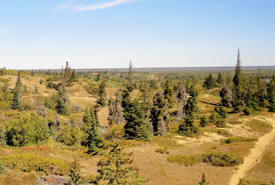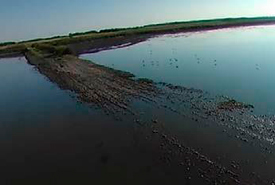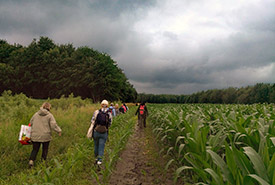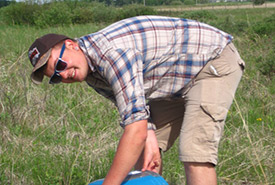Adjusting to change

Assiniboine Delta, MB (Photo by Jordan Becker)
“According to Darwin’s Origin of Species, it is not the most intellectual of the species that survives; it is not the strongest that survives; but the species that survives is the one that is able best to adapt and adjust to the changing environment in which it finds itself.” ~ Megginson, "Lessons from Europe for American Business," Southwestern Social Science Quarterly. (1963)
In my last post, I discussed the predicted climate trends in Manitoba, and how they may affect various natural processes within the region. One thing I did not have time to discuss was how these trends tie in with my work.
Much of the Nature Conservancy of Canada's (NCC’s) work happens within designated natural areas — large landscapes that share similar environmental conditions, represent priority areas for biodiversity and are under significant threat by humans. In Manitoba, we have nine natural areas:
- Assiniboine Delta
- Interlake
- East Parklands
- Oak Lake Sandhills and Wetlands
- Riding Mountain
- Souris River Valley
- Tall Grass Prairie
- West Souris Mixed-grass Prairie
- Whitemouth River Watershed
Each has a conservation plan that takes into account the specific ecological targets for maintaining biodiversity within that natural area and the current threats facing these targets. Many of these plans were written over the past five years, but, so far, only two have incorporated climate change adaptation. All plans include actions to revisit and adapt them in light of the predicted climate trends by the end of the decade. And that’s where I come in!

View of Oak Lake Wetland, MB, from a drone. (Photo by M3 Aerial Productions)
So how does one begin to summarize the effects of climate change on biodiversity across a region? Well, as a biologist, I first summarize the direct effects on plants and animals. Under climate change, conditions may become unfavourable where certain species reside. It is likely that many species will be forced to migrate to locations that have conditions they are adapted to (which usually means moving northward). For this to happen, however, two needs have to be met: suitable land further north and available corridors of land for species to travel there. This makes maintaining large blocks of suitable land crucial for protecting biodiversity under climate change.
Related blog posts
A topic of research that I find interesting was how climate change might impact human activities. I had not given much thought to which crops might be introduced under climate change, nor did I think much about how other agricultural practices may be affected by climate change. It appears that the increased CO2 emissions caused by climate change may benefit certain crop yields, and an increase in higher temperature days may allow for the introduction of new crops into Manitoba. The increase in summer drought conditions, however, could limit this unless farmers can properly irrigate. While this may benefit the food production sector, the need for water across the province could become a problem in future climate scenarios.

Volunteers walking through a corn field (Photo by NCC)
Other areas of water maintenance may be of importance in a changing climate. A rise in the frequency of floods and the need for more irrigation may lead to the additional construction of ditches, dams and other modifications to the drainage network to lessen the negative impacts to infrastructure and resource availability. While this may be somewhat beneficial for human activities, these incompatible drainage activities can impact groundwater, surface water levels and soil moisture content. These activities can also lead to a shift in plant communities, changes to the timing of water flows in streams and rivers, and a reduction in the size and health of wetlands.
In order to maintain a way of life under a changing climate, people may need to make adjustments that may not align with preserving biodiversity. However, I believe with proper planning and communications, humans and nature may continue to coexist to mutual benefit. This may mean preserving a wetland to prevent spring flooding or adjusting grazing periods to meet the needs of cattle while also accommodating the needs of migrating birds. I hope to update this series in a few months to discuss some of these conservation activities in more detail. I hope you will join me then to hear more about NCC's cutting-edge conservation science.


